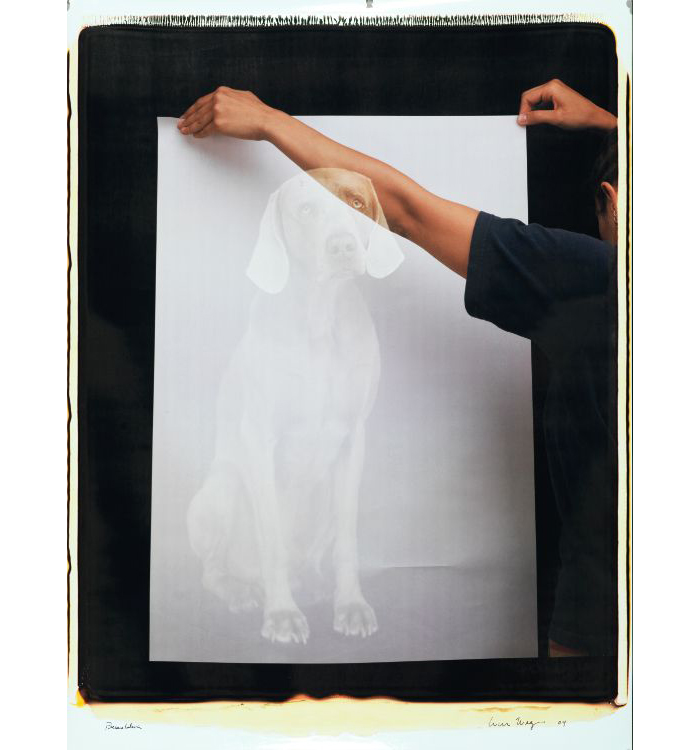In 1978, amongst other artists such as Andy Warhol, William Wegman was invited by The Polaroid Corporation to work with the newly developed 20 x 24 inch Polaroid camera. The camera initiated a project which lasted over 20 years and produced amongst some of Wegman’s most renowned works. As unique polaroid prints, the works pose questions of value and importance while humorously investigating themes of identity and fantasy.
Wegman’s work is immediately recognisable, working almost solely with his Weimaraners as subject. En Masse, Wegman’s portraits of his four-legged muses bring to mind portraits of famous figures. Each image anthropomorphically stages his dogs as characters, as Wegman suggests, ‘The dogs are always in a state of becoming something. They become characters, objects, when they are lying down they become landscapes.’ Uncomplicated, plain backdrops are often accompanied by chairs or plinths, which further canonise the statuesque Weimaraners who present different personas, tableaus or concepts in each image.
In Presentation, (2004), Wegman uses a double exposure to merge a portrait of his dog with an image of a blank sheet of paper being held aloft. The Weimaraner hovers ghostlike over the blank rectangle, with one transparent eye overlapping with the individual’s arm. The dog becomes mirage-like. The self-referential image nods wryly at its own production process. The image presents a dog framed within a composition and framed once again, this time with the method of rendering – the pair of human hands – revealed.
At 20 x 24 inches, the polaroid is huge compared to its regular format. Unable to be edited or reproduced, Wegman’s polaroids hold a different space to his digital photography. Sitting somewhere closer to an object and printed in the moment, polaroid photos resemble physical copies of memories. In this image, Wegman has played with the immediacy and ‘truthful’ nature of polaroid photos. Manipulating the image through a double exposure, Wegman’s portrait appears to present a window into a surreal, uncanny reality
(By Thea Gregory )
